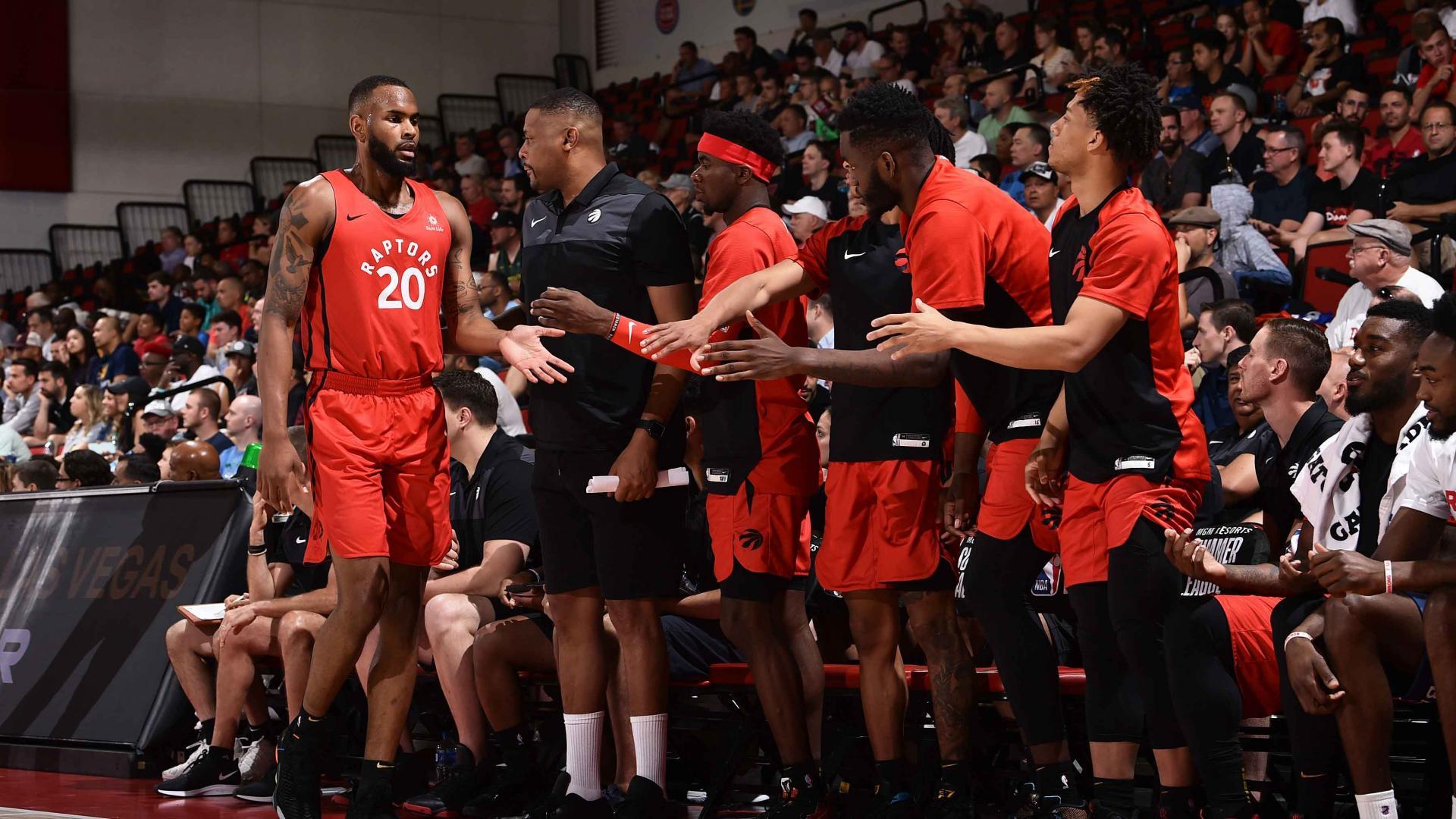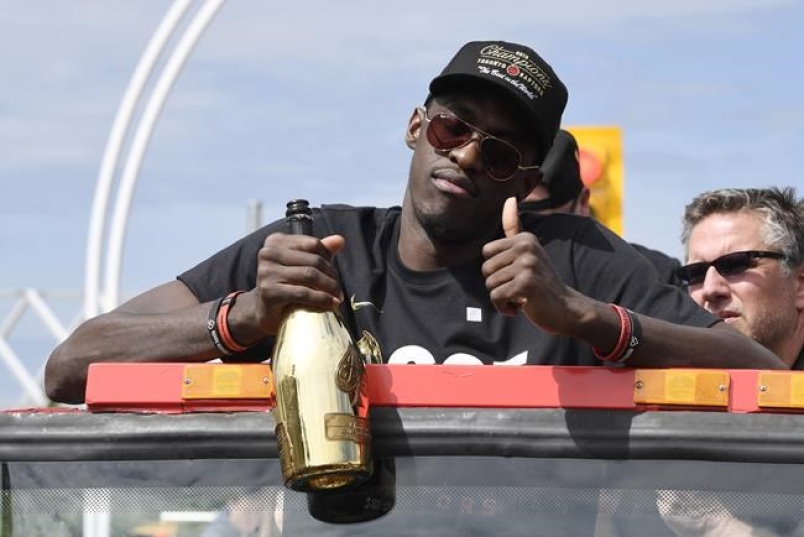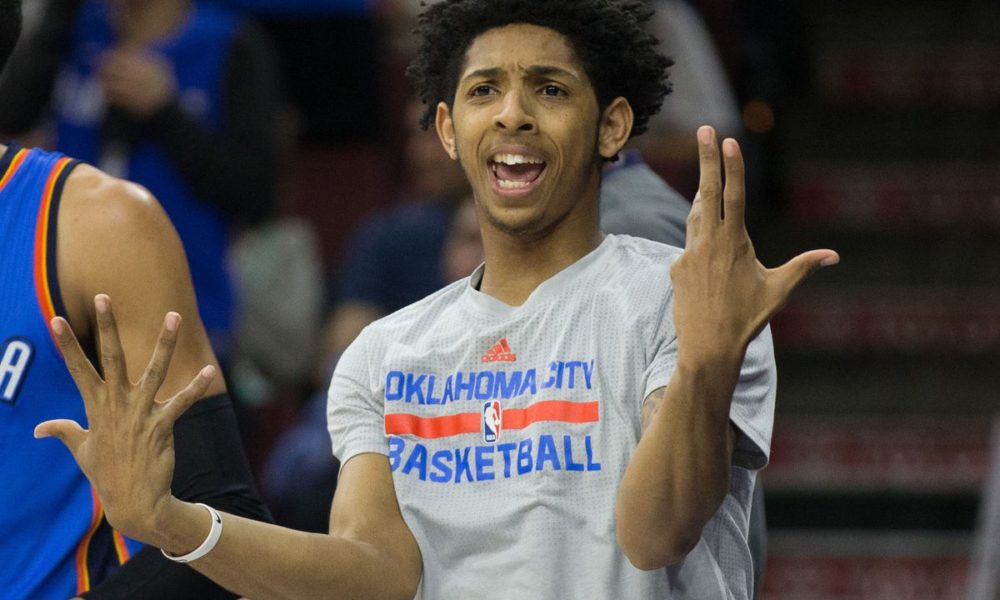The NBA Summer League is a strange viewing experience. Sure, teams are competing against one another and are hoping to ultimately win the championship, but in the end wins and losses don’t really matter. In the grand scheme of things, the value of a team’s holistic performance is superseded by the play of each individual on the floor. Even then, players torching the Summer League for thirty points a game is not necessarily indicative of a bright NBA future. A quick glance at the list of former MVPs tells us as such; for every Blake Griffin and Damian Lillard there is also a Josh Selby and Glen Rice Jr. to balance out the equation.
As such, players must be evaluated at a granular level. Lottery pick rookies aside (although apparently none of those even play in Las Vegas anymore), players competing in the Summer League are not destined to become dominant future stars. It is more important to look for skillsets within a player that can translate to the NBA, particularly attributes that may lead them to become a quality role player. For example, Aaron Holiday’s 23 shot attempts per game is less important to analyze than Duncan Robinson’s efficiency on different types of three-point shots. The former will likely be a low-usage backup guard, while the latter’s existence in the league will actually hinge upon their floor-spacing ability.
When assessing each Raptor in Las Vegas it is important to have those thoughts in mind. There is no exact formula to all this of course, but my grading is primarily based on how each player performed in relation to expectations and how they helped their future chances with the Raptors or another NBA team.
Core starters
Jordan Loyd – 27.8 mins, 13.8 ppg, 3.8 rebs, 5.5 ass, 3.3 stls, 31 fg%
This was an interesting tournament for Loyd. Normally known as a bucket getter, the guard really struggled with his shot only going 31 per cent from the floor on a ton of difficult shots. However, the glaring absence of shot creation and playmaking on the roster contributed to Loyd being forced into tough looks late in the shot clock (man, there was an absence of playmaking guards across the whole tournament). More important was how comfortable Loyd looked once he took up the point guard position from the second game onwards, a role that he has excelled in over the past year. Another improvement Loyd displayed was on the defensive end of the floor, averaging 3.3 steals per game as he thrived in the lanes picking off lazy passes that are aplenty in Las Vegas. A lot of focus on Loyd’s versatility has been on the offensive side of the ball, but at 6’4″ with improved quickness he can handle defending both guard positions. He isn’t a lockdown defender by any means – Lonnie Walker IV gave him buckets in their matchup – but Loyd is smart and works hard within the team’s defensive system. Despite being on a two-way deal, Loyd has an outside shot of cracking the third or fourth point guard spot.
Grade: A-
Malcolm Miller – 28.8 mins, 10.8 ppg, 4.3 rebs, 1 ass, 0.5 stls, 0.5 blks, 40 fg%
Like much of the Raptors team, Miller endured a torrid opening to Summer League before righting the ship in his last two games. It was a testing two weeks for Miller; the pressure of the looming guarantee date of his contract that must be decided on by July 24, plus he no doubt would have been aware of the influx of wing free agents that Toronto signed during Summer League. One positive note is that Miller’s energy never wavers through the peaks and valleys that shooters go through. He was particularly good defensively against the Knicks and Pacers, guarding a combination of Kevin Knox, R.J. Barrett, and Aaron Holiday. Once Miller’s shot began to drop (6-of-13 from deep in the final two games) he also became more aggressive punching the gaps with dribble penetration once the ball swung his way. Miller is a known commodity for Toronto at 26 years-old which may lead to the Raptors cutting him loose for roster flexibility to bring in alluring prospects, but he is also a proven player who has shown that he is capable of absorbing rotational minutes at the NBA level which shouldn’t be dismissed.
Grade: B
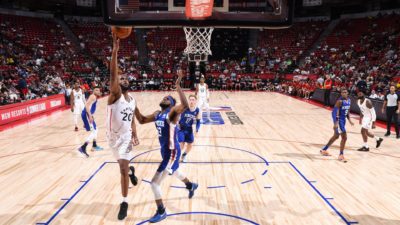
Dewan Hernandez – 23.6 mins, 12.8 ppg, 7 rebs, 1.8 ass, 0.8 blks, 41 fg%
Hernandez’ progression from game one to game five of the tournament was the most fun story to track over the two-week period. It was hard to refrain from knee-jerk reactions in the wake of his abysmal debut, but Hernandez himself acknowledged the jitters got the best of him in his first game in over 16 months. Once the big man got his feet wet and built a rapport with Chris Boucher he quickly became a focal point of the Raptors offence. Hernandez was a quality finisher in the pick-and-roll and has soft touch with either hand. He was also on the receiving end of a few alley-oop lobs. Hernandez’ faceup game was a little all over the place, however there were a few instances of impressive body control on drives towards the rim. The Raptors coaching staff emphasized that Hernandez’ biggest work-on entering Las Vegas was his ability to switch effectively and, although not perfect, there was some improvement on his ability to slide his feet against smaller guards. It was an awesome cap to the tournament for Hernandez to earn a full contract with the Raptors, although expect significant G League time to iron out some of the deficiencies in his game.
Grade: B+
Chris Boucher – 31 mins, 23 ppg, 9.8 rebs, 1.3 ass, 1.3 blks, 49 fg%
As the lone Raptors representative on either of the two Summer League teams, Boucher did what he does best by putting up monster numbers throughout the tournament. We already knew that Boucher could dominate this level of competition following his G League MVP season last year, however he did experiment with some new stuff in Las Vegas. Most notably, Boucher was eager to lead the fastbreak offence although his playmaking skills had scattered success. The greatest takeaway watching Slimm Duck was his improved efficiency: his three-point shots were plentiful but they weren’t chucked from all angles like Boucher has been known to do in garbage time minutes. The centre also took over on the glass and got to the line effectively once he and Hernandez figured each other’s games out.
I’m still torn on Boucher’s long-term viability as a Toronto Raptor and NBA player, but his raw talent is undeniable. The positional conundrum between forward and centre is a very real question that needs to be answered and Boucher doesn’t currently have the size to bang with bigs, nor is he a reliable enough ball-handler or shooter to fully downsize. Nevertheless, the guy has earned the right to try to crack the rotation and may continue his meteoric improvement once granted real NBA minutes.
Grade: A
Regulars in the rotation
Terence Davis – 28 mins, 18.3 ppg, 6 rebs, 5 ass, 1.3 stls, 1 blk, 50 fg%
I mean, you have to be doing something right when you win over the entire Raptors fanbase within one game. Davis’ energy, story, and eye-popping tournament all deservedly thrust him into becoming the focal point of Toronto’s Summer League. His ‘make them believe’ mantra follows in the footsteps of other overlooked Raptors that showed out in Summer League play and the manner in which Davis conducted himself during a whirlwind two weeks was mightily impressive. What really stood out off of the court was Davis’ awareness of what he would immediately need to bring to the Raptors in order to be a positive role player.
There were of course flaws that emerged as everyone slowly came down from the high that was Davis’ opening quarter of action for the Raptors. His three-point shooting mechanics look okay and the efficiency (10-for-24) is solid, but Davis will certainly need to prove that this wasn’t an aberration courtesy of small sample size. Davis was sufficient as a secondary ball-handler and found Hernandez for a few nice passes. Given his freakish athleticism, I’d like to see Davis tirelessly work on attacking closeouts hard (please follow the Norm Powell template) and the speed of his release on catch-and-shoot looks in the corner. Those two skills will be his bread and butter in Toronto, while he can refine his on-ball skills with the 905 in the G League. Although it would be ludicrous to assume that he will replicate the Summer League magic in the NBA, Davis does have a mentality and some skills that should translate at the higher level.
Grade: A (partial grade)
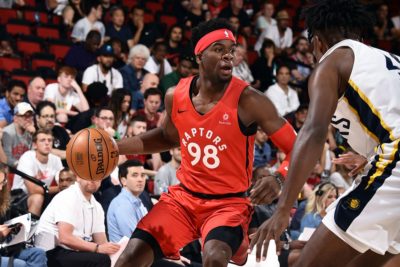
Lindell Wigginton – 15 mins, 7.4 ppg, 0.8 rebs, 0.8 ass, 1 stl, 33 fg%
It was a frustrating tournament for the Nova Scotian. Wigginton’s Summer League situation is a common one; a high usage score-first collegiate player that struggles to adapt to a far smaller role. This isn’t a slight on Wigginton, that adjustment is certainly hard and he did show flashes in the short stints that he was on the court for. The hang time and fearlessness that Wigginton has attacking the basket is undeniably impressive, even if the results were middling. He was also a very tenacious defender despite his small stature and was a constant pest on the opposition point guards. Still, he is a player that has thrived as a scorer and he was not efficient operating as a third or fourth option on the floor. When Wigginton did get his only start there was an immediate difference in his play. The guard diced Zhaire Smith and Matisse Thybulle on back-to-back possessions and had a handful of impressive solo scoring runs in a 26-point showing. Wigginton projects as a bench spark plug that needs the ball and would make for some fun viewing in Mississauga for the 905.
Grade: B-
Corey Walden – 19.5 mins, 5.5 ppg, 3 rebs, 2.8 ass, 0.8 stls, 33 fg%
I originally anticipated Walden to be a more advanced version of Wigginton, a shooting and scoring dynamo that would be offered a lot of opportunity to put up numbers. In actuality, Walden was the inverse to my expectations, proving to be a very good passer in the pick-and-roll and was almost too deferential that it actually became a detriment to his game. The Israeli MVP did not trust his outside shot, repeatedly hesitating and resetting before launching. Walden’s debut was promising, but his role was increasingly limited as the tournament wore on. Like Wigginton, Walden was a strong on-ball defender that got into his man and I believe he is a far better player than he was able to show. Although Walden may not have helped his NBA stock there will certainly be a solid overseas offer waiting for him this season.
Grade: C+
Darius Thompson – 13 mins, 3.6 ppg, 2 rebs, 0.2 ass, 0.8 stls, 50 fg%
The other European league MVP, Thompson slowly built upon each game and emerged as the most best non-Raptor on the team. Thompson demonstrated the aforementioned traits that point towards a viable future in the NBA. As soon as Thompson was plugged into the starting lineup he functioned well as the glue guy, moving the ball quickly, penetrating when the opportunity presented itself, and showing a smooth outside shot. Summer League games can be frantic as defenders pick up the ball for 94 feet, but Thompson was a necessary calming presence. The Raptors should have the most interest in pursuing Thompson ahead of all other unsigned options in the Summer League squad.
Grade: A-
Richard Solomon – 16.8 mins, 6 ppg, 5.8 rebs, 1.2 ass, 0.8 stls, 1.2 blks, 41 fg%
Solomon was a nice addition to the team and probably the most consistent player from game to game over the course of the tournament. He was the best rim protector and defensive rebounder on the team, despite Boucher’s gaudy numbers. Solomon also showed a little more to his game than just being a standard rim-runner, popping for a couple of threes and throwing a couple of nifty passes to backdoor cutters. Like Thompson, Solomon did a lot of little things well and was a noticeably positive influence on the team.
Grade: B+
End of bench
Jordon Varnado – 14 mins, 3.7 ppg, 4.3 rebs, 1 ass, 1 blk 33 fg%
Varnado’s minutes were fairly inconsistent over the course of the tournament and he did not show much on the offensive end to warrant more playing time. The one area where Varnado was interesting was on the defensive end of the floor. He is a stocky 6’7″ and fitted well as a tweener big, guarding frontcourt players but possessing the agility to switch onto guards and fly for loose balls.
Grade: B-
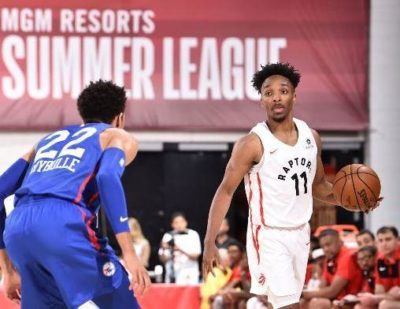
Matt Morgan – 13.8 mins, 4.3 ppg, 2 rebs, 1 ass, 0.5 stls, 18 fg%
Morgan’s Summer League performance highlights the small sample size that the tournament provides and that sweeping decisions cannot be made based off of a handful of games. The Cornell graduate was tabbed to be the best shooter in the team but went an icy 2-for-12 from deep. I’d lean towards Morgan’s 43.1 three-point average in his senior year when assessing his future potential. Morgan’s value was tied to his three-point shot and not being able to knock those down limited his impact, however he was reasonable as the two-guard closing a few games.
Grade: C+
Adonis Thomas – 14.3 mins, 3 ppg, 1.3 rebs, 1 ass, 25 fg%
Utilized as a defensive stopper, Thomas had middling results in this role. The wing guarded R.J. Barrett well in his sole start but then got torched by Lonnie Walker IV when brought on to try and cool him off. Thomas is a physical presence but it wasn’t really felt on the court. His offensive game is limited and he had a tendency to fade away from the basket on a lot of his jump-shots, often unnecessarily so. As an older guy on the roster, I’m not sure how much untapped upside Thomas has to bring to Toronto.
Grade: C
Jessie Govan – 5.7 mins, 2.7 ppg, 1.3 rebs, 0.3 ass, 43 fg%
The centre out of Georgetown really couldn’t find much time sitting behind the glut of frontcourt players on the Raptors roster. When Govan did get on the floor he popped for a few threes and went to a few patented post-up moves. He looked pretty slow-footed defensively and will need to be quicker laterally to snatch a two-way deal.
Grade: Incomplete
Kyle Allman Jr. – 11 mins, 3 ppg, 1 reb, 1 ass, 33 fg%
The last call up to the Summer League, Allman Jr. only played in the final game of the tournament and nailed a nice mid-range jumper. A cool way to start and finish your Las Vegas experience.
Grade: Incomplete
Duane Notice – N/A
The only full-time 905 member on the Summer League team, the organization has a good read on Notice’s upside and allotted more minutes to other unknown players. The Canadian wasn’t able to show much, but 905 fans are accustomed to his physical on-ball defence and solid catch-and-shoot ability.
Grade: Incomplete
Injuries
Sagaba Konate & Jamaal Franklin
Neither player managed to get on the floor in Las Vegas. Konate was still rehabbing an existing knee injury while Franklin suffered a foot injury in a pre-tournament practice. It was unfortunate to not see Konate take part in Summer League as I was very high on his potential, however he signed an Exhibit 10 deal with the team and will therefore be in training camp. Hopefully Konate finds his way onto a two-way deal this year.
Coaching
John Goodwillie
Another Canadian getting coaching experience, Goodwillie did a solid job over the course of Summer League. It’s hard to assess a coach during when wins and losses are secondary, but Goodwillie experimented with some fun lineups, greased the awkwardness of the double-big lineup, threw out some zone defence a few times, and correctly moved Loyd back into the point guard position. He was also engaging and insightful in post-game interviews which is an added bonus from a writer’s perspective!

